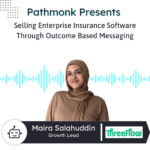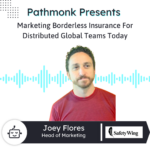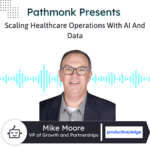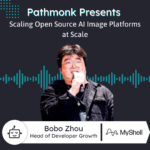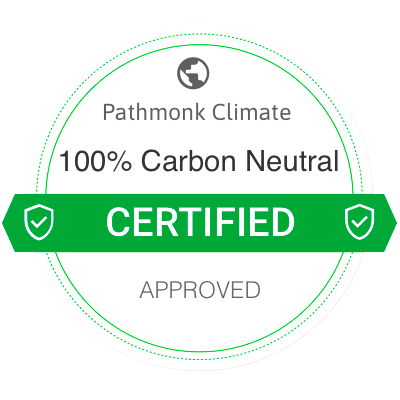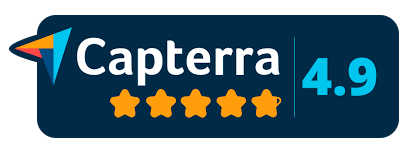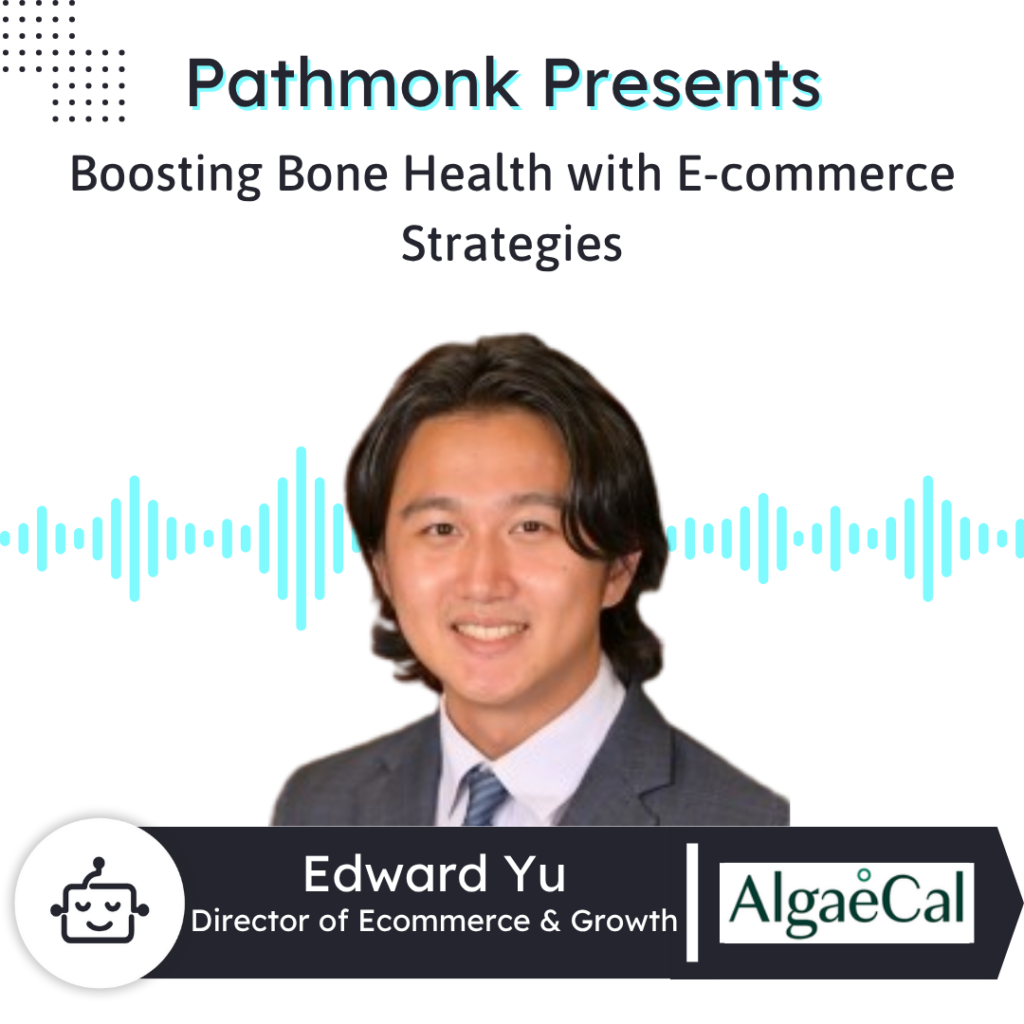
Introduction
Join us on Pathmonk Presents as we chat with Edward Yu, Director of E-commerce and Growth at AlgaeCal, a leading bone health company.
Edward shares how AlgaeCal’s clinically supported supplements help increase bone mineral density, even for the elderly. He dives into their customer acquisition strategies, emphasizing organic and paid search to reach their core demographic.
Edward also reveals tactics like heatmaps and iterative ad optimization to boost conversions. Learn how AlgaeCal prioritizes customer-centric journeys and team cohesion to drive growth.
Tune in for actionable insights to elevate your e-commerce game and inspire healthier lives.
Increase +180%
leads
demos
sales
bookings
from your website with AI
Get more conversions from your existing website traffic delivering personalized experiences.
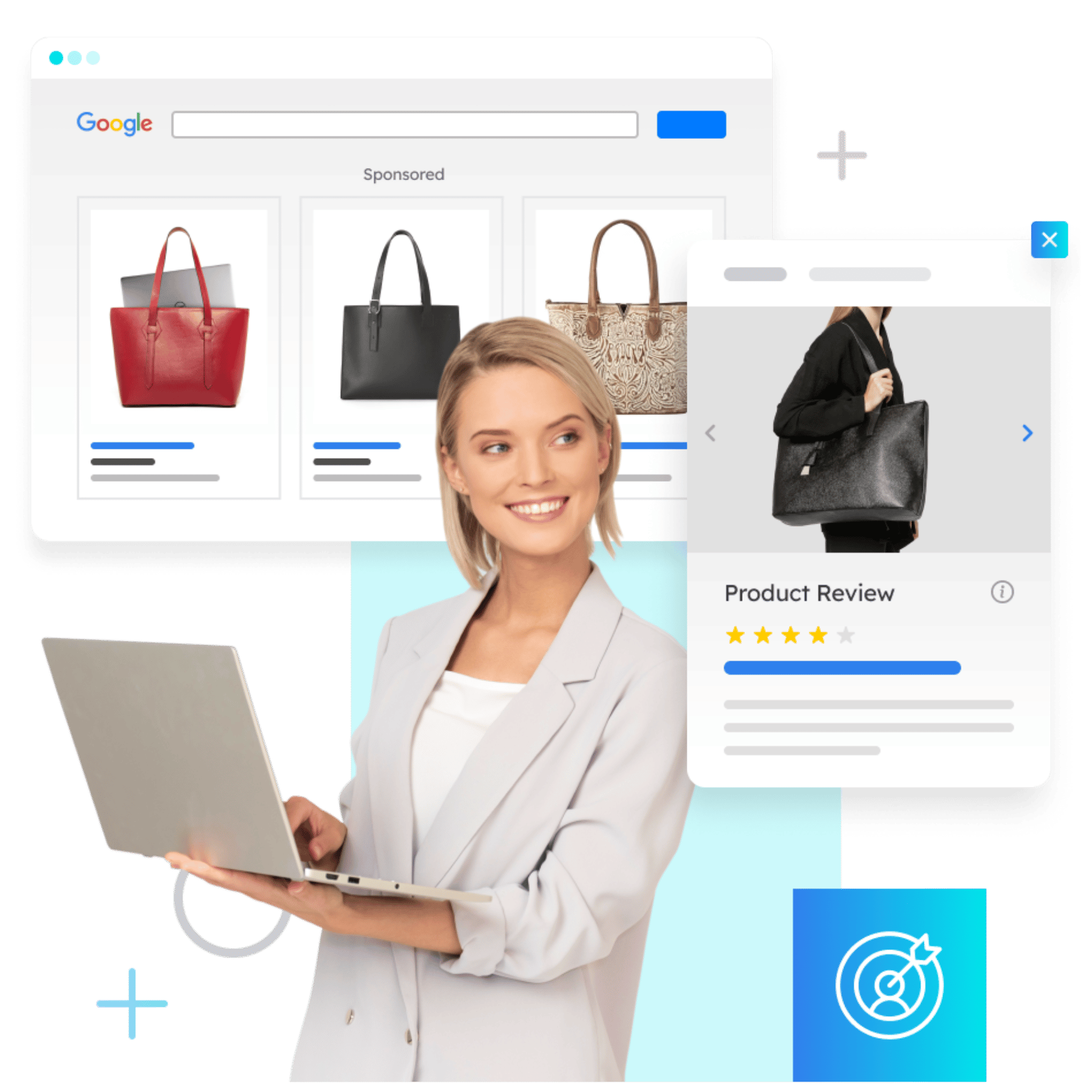
Rick: Pathmonk is the AI for website conversions. With increasing online competition, over 98% of website visitors don’t convert. The ability to successfully show your value proposition and support visitors in the buying journey separates you from the competition online. Pathmonk qualifies and converts leads on your website by figuring out where they are in the buying journey and influencing them in key decision moments with relevant micro experiences like case studies, intro videos, and much more. Stay relevant to your visitors and increase conversions by 50% by adding Pathmonk to your website in seconds, letting the AI do all the work and increase conversions while you keep doing marketing as usual. Check us out on pathmonk.com.
Alright everyone, welcome to today’s episode of Pathmonk Presents. Today we are joined by Edward Yu. He is the Director of E-commerce and Growth at AlgaeCal. Edward, welcome to the show.
Edward Yu: Thank you, Rick. I’m very glad to be here.
Rick: We’re glad to have you, Edward. I want to start with the basics a little bit because, obviously, we checked out AlgaeCal internally and this is how it came to be. But can you share what’s the idea behind your company? What we typically ask is, if you were explaining it to a friend over coffee, how would you describe what you do?
Edward Yu: Yeah, absolutely. AlgaeCal, first and foremost, is a bone health company. All of our products, and our flagship one primarily, help people. It’s the only clinically supported multi-nutrient calcium formula that physically regrows or increases bone mineral density in people, even if they’re elderly and even if they’ve struggled all their lives with it. We have three clinical studies that show that across hundreds of participants. You can tell I’m pretty fired up about the mission because it’s very rare—nobody else gets to make the claims that we do as far as effectiveness goes for our supplements.
Rick: Absolutely. I think it’s impressive in the sense that I know—I’m into fitness, for example—so I know the importance of bone density, both for longevity and performance also. Just bone health in general. I’ve always heard the only way to do it is obviously through nutrition and exercise also, but knowing that there is a specific supplement that can help with that—it’s a game changer, right? Because I’m sure it will help many different kinds of people. In fact, I’m also curious what kind of customers are the best fit for your products. I’m sure the elderly will be part of it, but maybe there’s someone else between your ideal customers, let’s say. And how does that impact their shopping experience in a way? Can you share a little bit about that?
Edward Yu: Sure. Yeah, that’s exactly it, right? If you were to pick the demographically most common one, it’d be an elderly lady who’s just received or has received some time in the past a diagnosis that impacted her poorly—that revealed troubling signs with her bone health. There’s a lot of cheap calciums in the grocery store and whatnot, but she’s taking those and it’s just not working. Because generally, as you age, you’re losing 1% of your bone mineral density a year, and it’s very hard to fight against it already, especially after menopause. And then all the cheap grocery store calciums are mined—basically, if you can imagine, they’re mined from quarries. They’re basically rock, as opposed to our stuff, which is made from actual plant algae.
And so the thing is, they’re taking the cheap stuff—maybe they’re even taking expensive stuff—but the problem is, it’s scary because they’re getting their DEXA scans, their bone density scans, and it’s not showing any improvement. That’s a very common profile: someone who’s elderly, who’s had maybe a scare, who’s also gotten scans that haven’t shown any improvement, even though they might be exercising or eating properly and doing everything “right,” so to speak.
Rick: Got it. That’s interesting. Would that be your main segment at the moment—elderly people looking to improve their bone health? And it’s a two-part question, really. If they are, what is the most effective customer acquisition channel for them so you can get more of those people informed and be able to sell the product? And how have you optimized those channels you use to drive consistent sales?
Edward Yu: For sure. Yeah, that’s the most numerically common type of profile. We do have some younger people, for example, who are still concerned about bone health, and they’ll take our collagen, for example. But in general, it skews more toward the older demographic.
The channels that work for them—the biggest problem for their journeys, and we always think about our customers’ or potential customers’ journeys, not what’s more convenient for us. For them, it’s what does their experience look like? They’ve been hearing conventional wisdom all these years, word of mouth, or talking with their doctors and what have you, and yet they still have this problem in front of them. So the biggest issue we’re trying to solve for them, regardless of the channel, is obviously for them to know that there’s a better option.
Knowing that, having identified that, how do we reach them? People are—I wouldn’t say always computer savvy—but people know they can do research on the internet now. So obviously search becomes a huge and primary way that people find us. We’ve been around for 23 years now, built up quite a large customer base, and there are lots of ways that you can find us, navigate around, and find our website, whether that’s organic search or our paid search ads or what have you. That’s our largest acquisition channel for the direct-to-consumer side.
I think your third question was how do we optimize that? There’s a very iterative, quick process that we look at internally every month and week. When we make observations about how different ad groups are performing or how different keywords are performing, we’ll stay on top of the trends and also pay attention to matching those up with the right landing pages that answer the question or tie back to what that search term was talking about. Again, I think the common theme here is that we’re trying to put on our customer hats as often as possible, think about how it feels to be them, and what’s going to answer the question quickest if they’re searching online for a better option.
Rick: Got it. Okay, let’s talk about the website for a second. I just want to understand a little bit from your experience. If you could share, what are the key elements, in your experience, of a high-converting e-commerce website? And if you have any tools, tactics, or maybe even strategies that you rely on to boost sales or improve user experience, please do share. Because I know our audience wants it, and I know myself and our team—we’re always keeping an eye out for new and interesting tactics.
Edward Yu: Yeah, absolutely. I’ll answer that question in reverse. The things that have been really helpful—and actually especially fun to collect—are, for example, heatmaps, where you’re looking at how people are scrolling through your website or how they’re clicking and engaging with the page. The SaaS options available now have gotten as far as even being able to identify rage clicks—a large, repeated number of clicks over a very short amount of time where they’re trying to get somewhere—or you nail down with a scroll heatmap how far people go before they jump. Maybe there’s a big gap where people bounce—there’s a cliff and everyone leaves the page in a specific place.
Obviously, Pathmonk and tools like yours are going to be very helpful for people to understand and recapture those who aren’t getting what they need. That’s the worst thing, philosophically to me: the fact that you’ve already gotten them to your website—they’re there—and yet something is preventing them from either learning more or purchasing. We’re not saying 100% of people who go to your website are going to convert. That’s never going to happen. However, you know that the number of people who would never purchase is still pretty small—it’s still somewhat small. So you have to figure you need a variety of content to solve the problem that they need, and also the feedback you collect from them to be able to know what it is you are not addressing their need for.
Rick: That’s a great point. You’re preaching to the choir here, obviously. That’s what we dedicate ourselves to at Pathmonk—really making that content contextual, making sure people that land on the page are able to go through the journey seamlessly and convert. But yeah, it’s great to understand how you think about it—it’s just keeping things simple and relevant for the visitor, right?
Edward Yu: Yep.
Rick: Okay, let’s switch gears for a second, Edward. I want to talk about you as a leader for a second. What’s a day in the life for you as a Director of E-commerce and Growth? If you could give us a glimpse into what you focus on day to day, problems that arise, and what it’s like to run an e-commerce operation like yours.
Edward Yu: Sure. Maybe I’ll answer the inverse of your question because I think that’s my style here. The team here is great—it’s incredible. My primary job is not to do the work but to make sure there’s cohesion and that they have the resources to solve problems. I don’t need to get in their way. I’m confident that I never need to micromanage them—they’re capable. So I’ll just stay out of the way.
The biggest things for me are making sure that they have what they need, that there are as few kinks in the process as possible, and then, if there are times or situations where we need to work with other teams and there’s a misalignment in, let’s say, resources or deadlines, that I can help everybody negotiate a non-zero-sum, happy outcome so everyone can move forward. We do everything internally. We don’t have external contractors and whatnot, so it’s important that everyone is part of our team at the end of the day. I think cohesion is a big part there. In a single word, I want to be the multiplier of the team instead of—I don’t know any other analogies, like I’m the highest performer or whatnot. I’m not about that. Just let me be the multiplier of the work of the team we already have.
Rick: Got it. I’m curious—with you having this leadership position, do you still get operative from time to time? And if not, do you ever miss it?
Edward Yu: Yeah, actually, yes. The short answer is yes, because sometimes that’s what the team needs or asks for—to get into the accounts for a quick question. The part that I do get operational on the most often is attribution, which is extremely fun. And it’s a huge problem because no one has solved attribution in the entire industry. No one knows—no one has perfect attribution. And there are all sorts of very good reasons for that, from privacy to tech limitations to all sorts of things. So yes—the quick answer is yes, not so often, but I do look forward to any attribution work in particular when we do get hands-on.
Rick: You get the itch sometimes, right?
Edward Yu: Yeah. Gotta scratch it.
Rick: Yep. All right, very good. Edward, we’re coming towards the end of our time here. Typically, we do a rapid-fire segment where we have a few questions. We try to keep things light and engaging. The only rule we have is that for a concise question, we expect a concise answer. Would you be ready for that?
Edward Yu: Yeah.
Rick: Awesome. All right, let’s do it. Do you prefer watching or reading?
Edward Yu: Reading.
Rick: Reading. Okay. What’s the latest book you picked up, and were there any gems or ideas that stuck with you?
Edward Yu: Yeah, this one I loved. It’s called Average is Over by Tyler Cowen. Essentially, he was incredibly prescient. He picked up on all the major political, social, and economic trends that we’ve been observing in the U.S. recently, and he wrote this book in 2013. He wasn’t trying to predict—he was just trying to identify—but basically, he predicts all the major ones that have now happened by 2025.
Rick: Wow. Okay. Yeah, that’s a good one for sure. If anything, even for investing—if you get an idea of these socioeconomic developments or whatever it may be, if you have an eye for that, then you can use it for that reason also, right?
Edward Yu: Yeah, and lots of just understanding where everything is. Because the world’s pretty complicated, and you do feel confused an awful lot.
Rick: Yeah. Fair point. So if you had a magic wand and could fix one frustrating thing in your marketing life with tech, what would it be?
Edward Yu: It’d be getting instant and complete feedback from every single visitor. You’d be able to know why they did X, Y, or Z action on your site.
Rick: Yeah, that’s a good one.
Edward Yu: Yeah.
Rick: How about you? If you could go back and give your past self a quick pep talk at the start of your journey, what advice would you draw?
Edward Yu: We’re all gonna make it. There’s going to be extremely hard times, and that’s normal. There’s going to be crises, and stuff is going to go wrong all the time. But if you zoom out and look, you’re gonna make it. It’s all part of the process. Failures, pain, daily pain—whatever flavor that takes—it’s gonna end up okay. You don’t necessarily get stronger from every type of those, but you’re going to outlast them.
Rick: Love it. That’s a beautiful mindset to have. Very optimistic. Edward, thanks a lot for being on the show with us today. I want to give you the last word. If someone forgets everything about the interview today, what is the one thing they should remember about the work you do and AlgaeCal?
Edward Yu: There’s hope. There’s something out there that works. You just have to find us. We’re here at algaeCal.com. You can increase your bone mineral density at any age.
Rick: Amazing. Edward, thank you again. We hope to see you again soon. Thanks again for the conversation. I wish you a wonderful day.
Edward Yu: Beautiful. Thanks for having me, Rick. It was a fun conversation. Look forward to being back if there’s ever another opportunity. All right, I’ll go now. Bye everybody.




